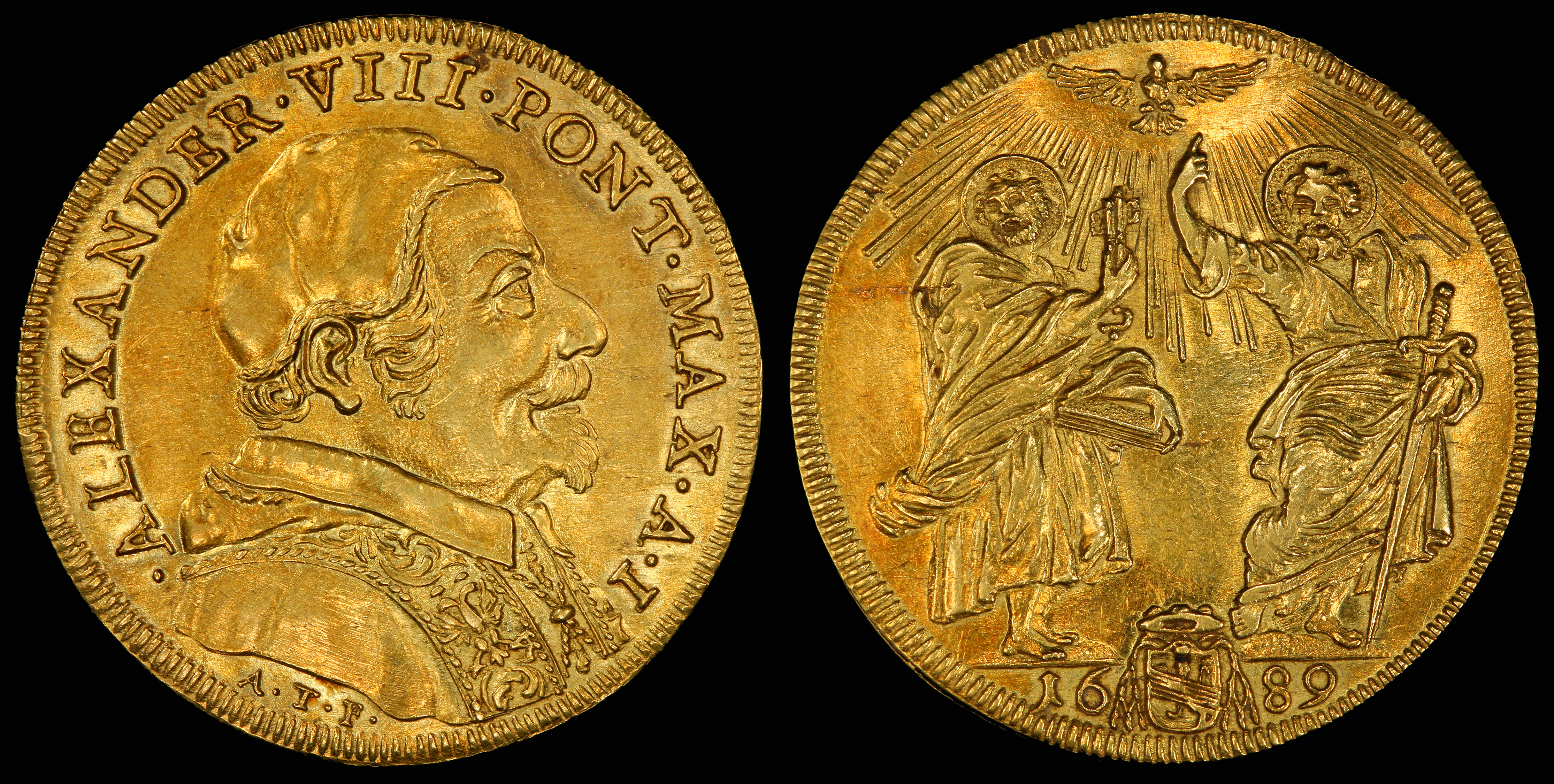|
Romanum Decet Pontificem
''Romanum decet Pontificem'' (named for its Latin incipit: "it befits the Roman Pontiff") is a papal bull issued by Pope Innocent XII (1691–1700) on June 22, 1692, banning the office of cardinal-nephew, limiting his successors to elevating only one cardinal relative, eliminating various ''sinecures'' traditionally reserved for cardinal-nephews and capping the stipend or endowment the nephew of a pope could receive to 12,000 scudi. ''Romanum decet Pontificem'' was later incorporated into the Code of Canon Law of 1917 The 1917 ''Code of Canon Law'' (abbreviated 1917 CIC, from its Latin title ), also referred to as the Pio-Benedictine Code,Dr. Edward Peters accessed June-9-2013 was the first official comprehensive codification of Latin canon law. Ordered ... in canons 240, 2; 1414, 4; and 1432, 1. In 1694, Innocent XII's series of reforms was capped off with an expensive campaign to eliminate the venality of offices while reimbursing their current holders. However, fo ... [...More Info...] [...Related Items...] OR: [Wikipedia] [Google] [Baidu] |
Pope Innocent XII
Pope Innocent XII ( la, Innocentius XII; it, Innocenzo XII; 13 March 1615 – 27 September 1700), born Antonio Pignatelli, was head of the Catholic Church and ruler of the Papal States from 12 July 1691 to his death in September 1700. He took a hard stance against nepotism in the Church, continuing the policies of Pope Innocent XI, who started the battle against nepotism but which did not gain traction under Pope Alexander VIII. To that end, he issued a papal bull strictly forbidding it. The pope also used this bull to ensure that no revenue or land could be bestowed on relatives. Biography Early life Antonio Pignatelli was born on 13 March 1615 in SpinazzolaOtt, Michael. "Pope Innocent XII." The Catholic Encyclopedia Vol. 8. New York: Robert Appleton Company, 1910. 4 February 2019 (now i ... [...More Info...] [...Related Items...] OR: [Wikipedia] [Google] [Baidu] |
Latin
Latin (, or , ) is a classical language belonging to the Italic branch of the Indo-European languages. Latin was originally a dialect spoken in the lower Tiber area (then known as Latium) around present-day Rome, but through the power of the Roman Republic it became the dominant language in the Italian region and subsequently throughout the Roman Empire. Even after the fall of Western Rome, Latin remained the common language of international communication, science, scholarship and academia in Europe until well into the 18th century, when other regional vernaculars (including its own descendants, the Romance languages) supplanted it in common academic and political usage, and it eventually became a dead language in the modern linguistic definition. Latin is a highly inflected language, with three distinct genders (masculine, feminine, and neuter), six or seven noun cases (nominative, accusative, genitive, dative, ablative, and vocative), five declensions, four verb conjuga ... [...More Info...] [...Related Items...] OR: [Wikipedia] [Google] [Baidu] |
Incipit
The incipit () of a text is the first few words of the text, employed as an identifying label. In a musical composition, an incipit is an initial sequence of notes, having the same purpose. The word ''incipit'' comes from Latin and means "it begins". Its counterpart taken from the ending of the text is the explicit. Before the development of titles, texts were often referred to by their incipits, as with for example ''Agnus Dei''. During the medieval period in Europe, incipits were often written in a different script or colour from the rest of the work of which they were a part, and "incipit pages" might be heavily decorated with illumination. Though the word ''incipit'' is Latin, the practice of the incipit predates classical antiquity by several millennia and can be found in various parts of the world. Although not always called by the name of ''incipit'' today, the practice of referring to texts by their initial words remains commonplace. Historical examples Sumerian In th ... [...More Info...] [...Related Items...] OR: [Wikipedia] [Google] [Baidu] |
Cardinal-nephew
A cardinal-nephew ( la, cardinalis nepos; it, cardinale nipote; es, valido de su tío; pt, cardeal-sobrinho; french: prince de fortune)Signorotto and Visceglia, 2002, p. 114. Modern French scholarly literature uses the term "cardinal-neveu'". was a cardinal elevated by a pope who was that cardinal's relative. The practice of creating cardinal-nephews originated in the Middle Ages, and reached its apex during the 16th and 17th centuries. The last cardinal-nephew was named in 1689 and the practice was abolished in 1692.Bunson, Matthew. 1995.Cardinal Nephew. ''The Pope Encyclopedia''. Crown Trade Paperbacks. . The word ''nepotism'' originally referred specifically to this practice, when it appeared in the English language about 1669. From the middle of the Avignon Papacy (1309–1377) until Pope Innocent XII's anti-nepotism bull (a papal charter), ''Romanum decet pontificem'' (1692), a pope without a cardinal-nephew was the exception to the rule. Every Renaissance pope who creat ... [...More Info...] [...Related Items...] OR: [Wikipedia] [Google] [Baidu] |
Cardinal Relative
A cardinal-nephew ( la, cardinalis nepos; it, cardinale nipote; es, valido de su tío; pt, cardeal-sobrinho; french: prince de fortune)Signorotto and Visceglia, 2002, p. 114. Modern French scholarly literature uses the term "cardinal-neveu'". was a cardinal elevated by a pope who was that cardinal's relative. The practice of creating cardinal-nephews originated in the Middle Ages, and reached its apex during the 16th and 17th centuries. The last cardinal-nephew was named in 1689 and the practice was abolished in 1692.Bunson, Matthew. 1995.Cardinal Nephew. ''The Pope Encyclopedia''. Crown Trade Paperbacks. . The word '' nepotism'' originally referred specifically to this practice, when it appeared in the English language about 1669. From the middle of the Avignon Papacy (1309–1377) until Pope Innocent XII's anti-nepotism bull (a papal charter), ''Romanum decet pontificem'' (1692), a pope without a cardinal-nephew was the exception to the rule. Every Renaissance pope who crea ... [...More Info...] [...Related Items...] OR: [Wikipedia] [Google] [Baidu] |
Sinecure
A sinecure ( or ; from the Latin , 'without', and , 'care') is an office, carrying a salary or otherwise generating income, that requires or involves little or no responsibility, labour, or active service. The term originated in the medieval church, where it signified a post without any responsibility for the " cure areof souls", the regular liturgical and pastoral functions of a cleric, but came to be applied to any post, secular or ecclesiastical, that involved little or no actual work. Sinecures have historically provided a potent tool for governments or monarchs to distribute patronage, while recipients are able to store up titles and easy salaries. A sinecure can also be given to an individual whose primary job is in another office, but requires a sinecure title to perform that job. For example, the Government House Leader in Canada is often given a sinecure ministry position so that they may become a member of the Cabinet. Similar examples are the Lord Keeper of the Privy ... [...More Info...] [...Related Items...] OR: [Wikipedia] [Google] [Baidu] |
Stipend
A stipend is a regular fixed sum of money paid for services or to defray expenses, such as for scholarship, internship, or apprenticeship. It is often distinct from an income or a salary because it does not necessarily represent payment for work performed; instead it represents a payment that enables somebody to be exempt partly or wholly from waged or salaried employment in order to undertake a role that is normally unpaid or voluntary, or which cannot be measured in terms of a task (e.g. members of the clergy). A paid judge in an English magistrates' court was formerly termed a "stipendiary magistrate", as distinct from the unpaid "lay magistrates". In 2000, these were respectively renamed "district judge (magistrates courts)" and "magistrate". Stipends are usually lower than would be expected as a permanent salary for similar work. This is because the stipend is complemented by other benefits such as accreditation, instruction, food, and/or accommodation. Some graduate schools ... [...More Info...] [...Related Items...] OR: [Wikipedia] [Google] [Baidu] |
Financial Endowment
A financial endowment is a legal structure for managing, and in many cases indefinitely perpetuating, a pool of financial, real estate, or other investments for a specific purpose according to the will of its founders and donors. Endowments are often structured so that the inflation-adjusted principal or "corpus" value is kept intact, while a portion of the fund can be (and in some cases must be) spent each year, utilizing a prudent spending policy. Endowments are often governed and managed either as a nonprofit corporation, a charitable foundation, or a private foundation that, while serving a good cause, might not qualify as a public charity. In some jurisdictions, it is common for endowed funds to be established as a trust independent of the organizations and the causes the endowment is meant to serve. Institutions that commonly manage endowments include academic institutions (e.g., colleges, universities, and private schools); cultural institutions (e.g., museums, librarie ... [...More Info...] [...Related Items...] OR: [Wikipedia] [Google] [Baidu] |
Scudi
The ''scudo'' (pl. ''scudi'') was the name for a number of coins used in various states in the Italian peninsula until the 19th century. The name, like that of the French écu and the Spanish and Portuguese escudo, was derived from the Latin ''scutum'' ("shield"). From the 16th century,Klütz: ''Münznamen...'' the name was used in Italy for large silver coins. Sizes varied depending on the issuing country. The first ''scudo d'argento'' (silver shield) was issued in 1551 by Charles V (1519–1556) in Milan. Under Maria Theresa and Joseph II the ''scudo d'argento'' had a weight of 23.10 g and a fineness of 896/1000. In the Kingdom of Lombardy–Venetia (under the control of the Habsburg Austrian Empire), the Lombardy–Venetia scudo was equivalent to the Conventionsthaler and was subdivided into six '' lire''. Before the Napoleonic Wars, the lira was subdivided into 20 ''soldi'', each of 12 ''denari''. Later, the lira was made up of 100 ''centesimi''. When Austria-Hungary deci ... [...More Info...] [...Related Items...] OR: [Wikipedia] [Google] [Baidu] |
Code Of Canon Law Of 1917
The 1917 ''Code of Canon Law'' (abbreviated 1917 CIC, from its Latin title ), also referred to as the Pio-Benedictine Code,Dr. Edward Peters accessed June-9-2013 was the first official comprehensive codification of Latin canon law. Ordered by Pope Pius X in 1904 and carried out by the Commission for the Codification of Canon Law, led by Pietro Cardinal Gasparri, the work to produce the code was completed and promulgated under Pope Benedict XV on 27 May 1917, coming into effect on 19 May 1918.Metz, "What is Canon Law?", pg. 59 The 1917 ''Code of Canon Law'' has been described as "the greatest revolution in canon law since the time of Gratian" (1150s AD). The 1917 ''Code of Canon Law'' remained in force until the 1983 ''Code of Canon Law'' took legal effect and abrogated it on 27 November 1983.NYTimes.com,New Canon Law Code in Effect for Catholics, 27-Nov-1983, accessed June-25-2013 History Background Papal attempts at codification of the scattered mass of canon law spa ... [...More Info...] [...Related Items...] OR: [Wikipedia] [Google] [Baidu] |
Cardinal-nephews
A cardinal-nephew ( la, cardinalis nepos; it, cardinale nipote; es, valido de su tío; pt, cardeal-sobrinho; french: prince de fortune)Signorotto and Visceglia, 2002, p. 114. Modern French scholarly literature uses the term "cardinal-neveu'". was a cardinal elevated by a pope who was that cardinal's relative. The practice of creating cardinal-nephews originated in the Middle Ages, and reached its apex during the 16th and 17th centuries. The last cardinal-nephew was named in 1689 and the practice was abolished in 1692.Bunson, Matthew. 1995.Cardinal Nephew. ''The Pope Encyclopedia''. Crown Trade Paperbacks. . The word ''nepotism'' originally referred specifically to this practice, when it appeared in the English language about 1669. From the middle of the Avignon Papacy (1309–1377) until Pope Innocent XII's anti-nepotism bull (a papal charter), ''Romanum decet pontificem'' (1692), a pope without a cardinal-nephew was the exception to the rule. Every Renaissance pope who create ... [...More Info...] [...Related Items...] OR: [Wikipedia] [Google] [Baidu] |


.jpg)



.jpg)


_(page_10_crop).jpg)